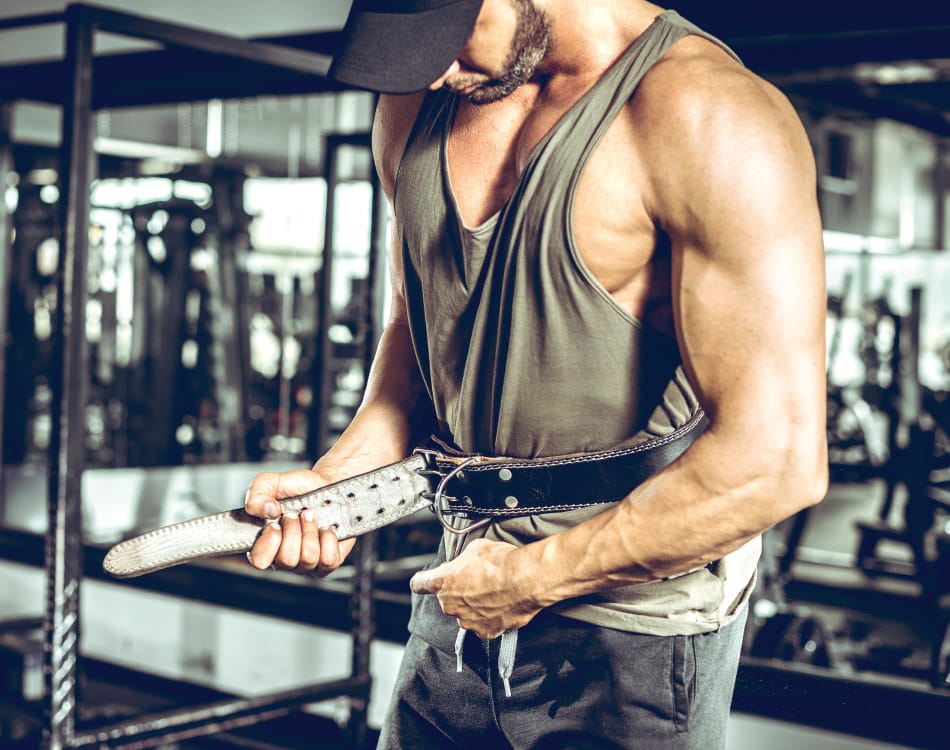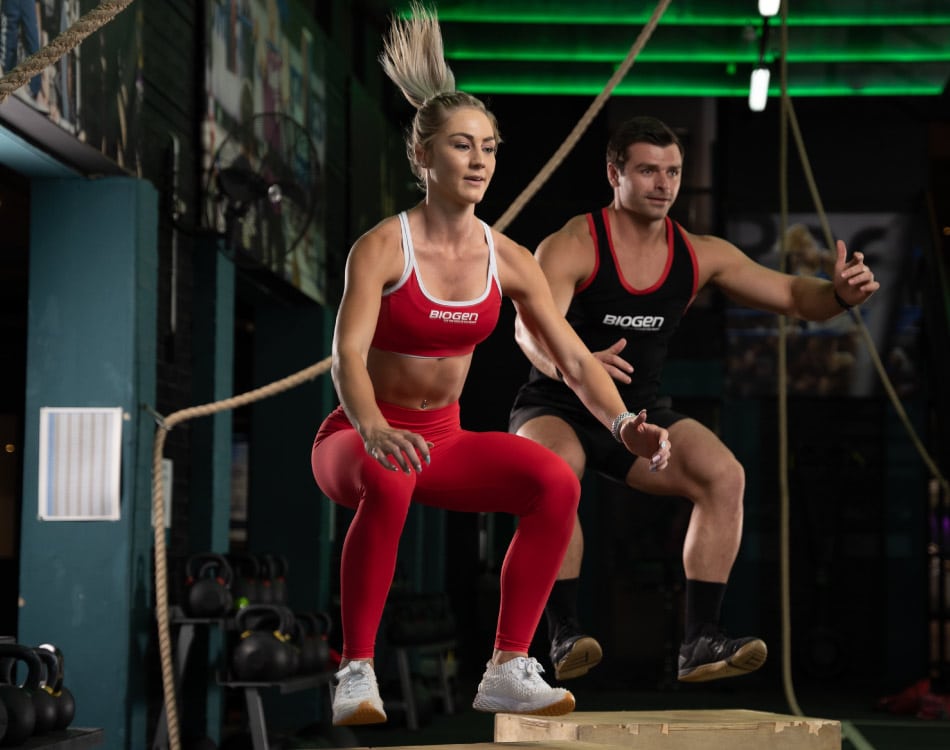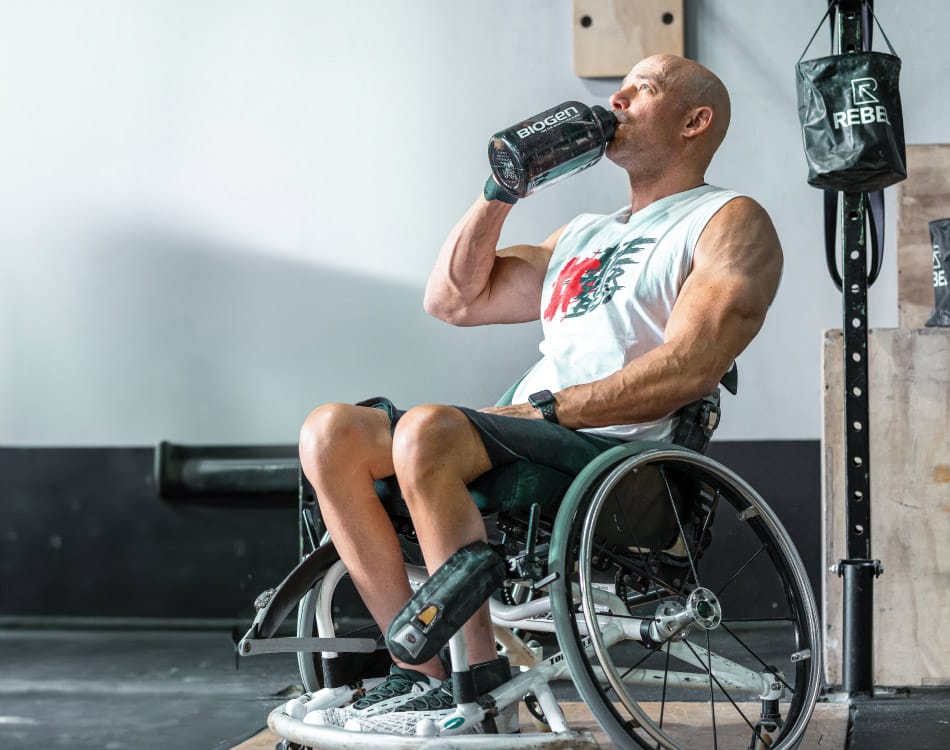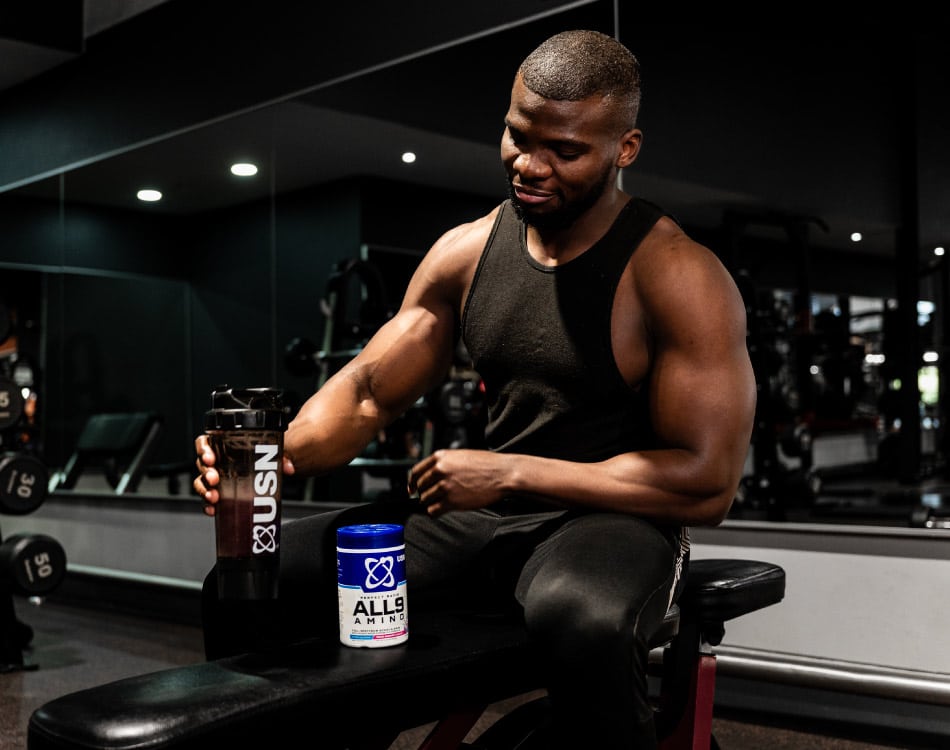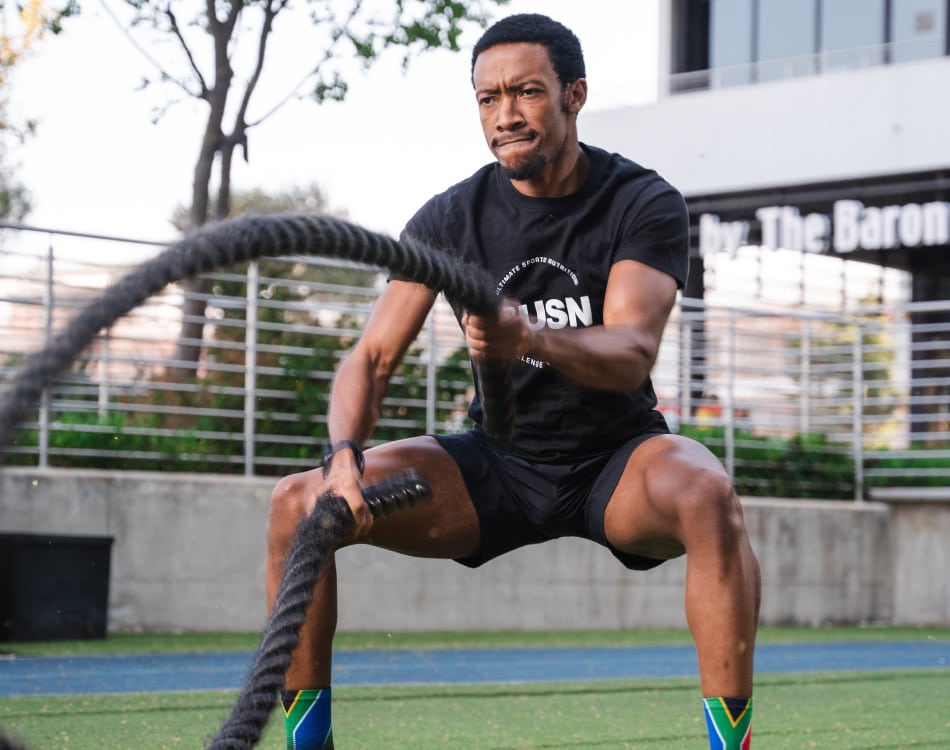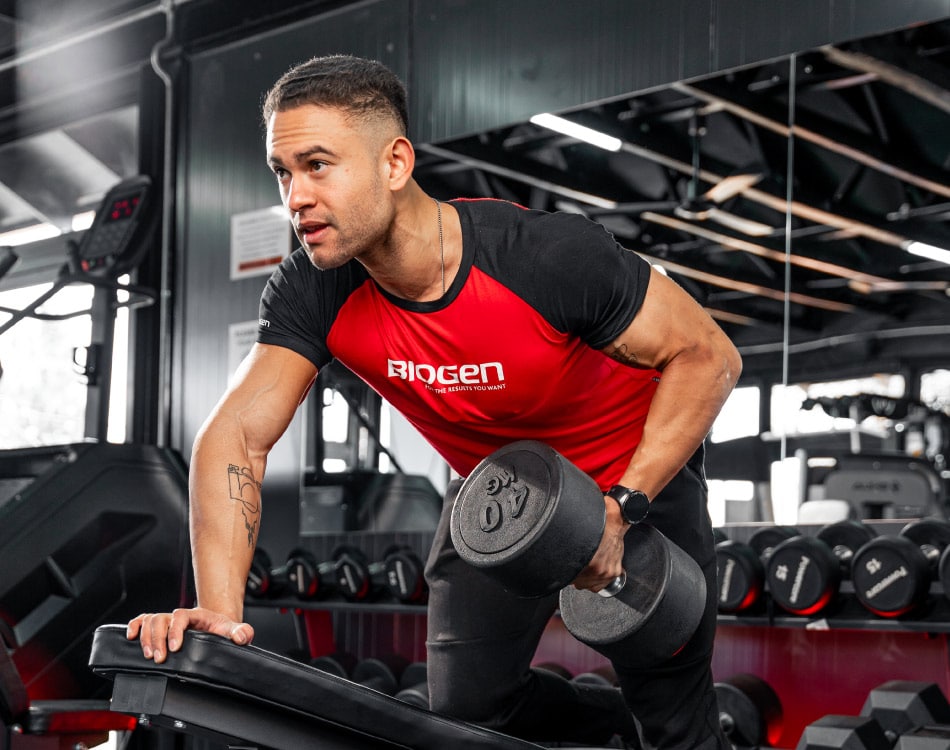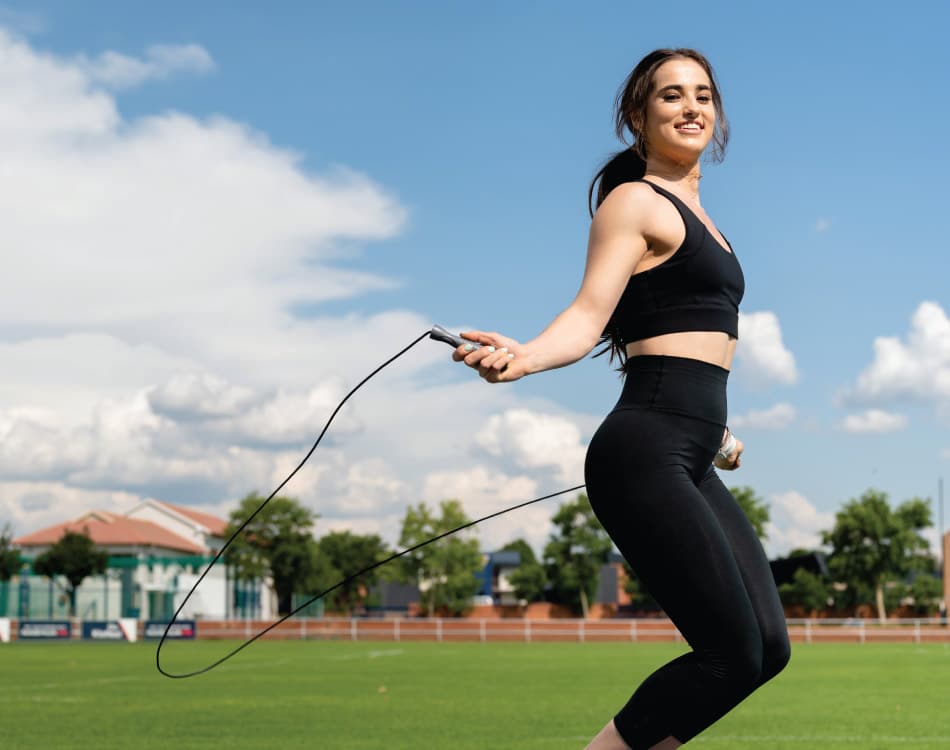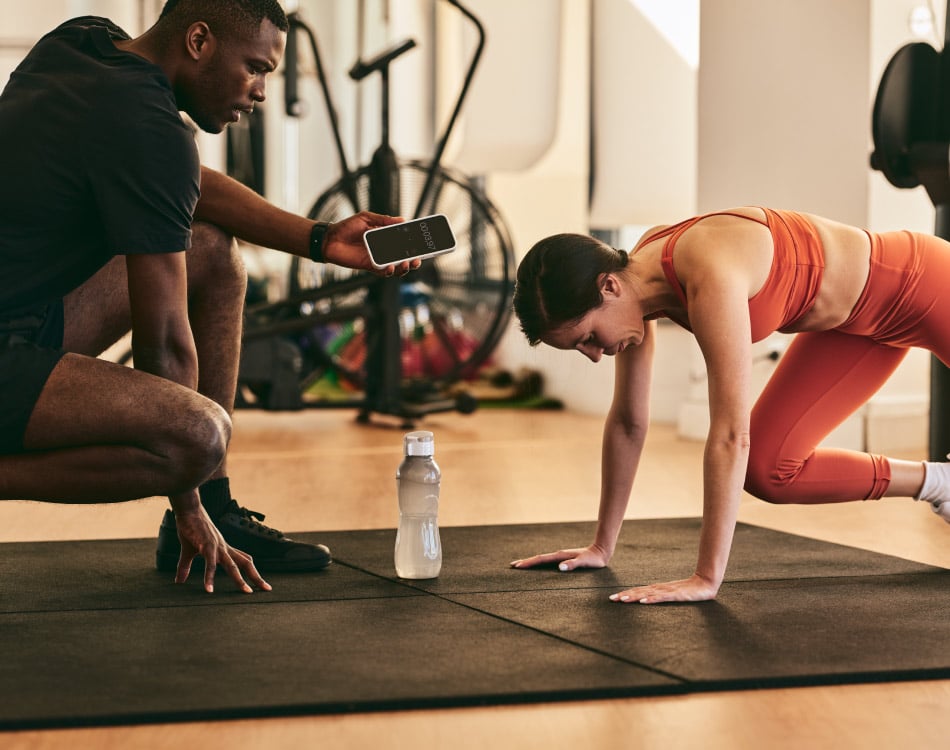As gym-goers progress in their training and push their physical limits by adding more plates to the bar, safety and performance become increasingly important considerations, which is where a weightlifting belt can help.
In our quest to realise those gains while reducing our injury risk, many lifters consider the pros and cons of a weightlifting belt.
READ MORE | Fix Your Form To Squat Heavy
Belt up and rep out
A weightlifting belt is a wide, stiff belt worn around the waist during strength training exercises, especially those involving heavy loads and compound movements.
Weightlifting belts are often made from cowhide leather and feature an adjustable heavy duty metal buckle that allows for a secure fit with various evenly-spaced holes to comfortably fit different waist sizes.
You can also purchase a premium neoprene weightlifting belt, which is typically made from a quality waterproof material with a metal buckle and velcro fastener for a secure, custom and comfortable fit.
These belts may provide better comfort and the flexibility compared to a leather belt, without compromising on the back and torso support and stability needed during heavy weightlifting.
How to use a belt
Proper application and use of a weightlifting belt are essential to harness its benefits during heavy compound lifts and reduce your injury risk. Follow these guidelines to ensure optimal support:
- Position the weightlifting belt around your lower back and abdominal region, just above the hip bones.
- The belt should fit snugly but not too tight, allowing room for a deep breath and intra-abdominal pressure buildup.
- As you initiate the lift, take a deep breath, pushing against the belt to create tension in your core. This action increases intra-abdominal pressure, providing a stable base for your spine.
- Maintain proper posture and engage your core muscles throughout the lift, focusing on using the belt as an aid to reinforce your natural core support.
READ MORE | Put Your Strength To The Test: 4 Guidelines To Perform A One-Rep Max Test
The belt benefits
Reduce injury risk: Weightlifting belts may help to reduce injury risk when lifting heavier loads by supporting your spine and core and stabiliser muscles in the back, and enhancing biomechanics.
Better movement: By helping lifters maintain a more upright torso and correct body alignment, they may aid movement efficiency and provide a performance benefit while lifting.
Better stabilisation: A weightlifting belt can improve trunk stabilisation during heavy lifts like squats and deadlifts by helping to create intra-abdominal pressure, which acts as a natural support mechanism for the spine. This happens by facilitating a stronger isometric contraction via the increased pressure created when force is exerted against the belt, which is what ultimately increases spinal stability.
Improves safety: The increased pressure also provides additional stability to the core and reduces the risk of hyperextension or excessive flexion during the lift1, which can improve safety during heavier lifts.
Reduces spine loading: Findings from a 2006 study2 also revealed that a weightlifting belt could reduce intervertebral disc compression forces by 10%, but only when inhaling before lifting. The researchers concluded: “Wearing a tight and stiff back belt while inhaling before lifting reduces spine loading.”
Enhanced muscle activation: Research indicates that wearing a weightlifting belt can lead to increased muscle activation during certain lifts. A study published in the Journal of Strength and Conditioning Research found that participants who wore weightlifting belts during squats had greater activation of the erector spinae muscles and the rectus abdominis compared to those who did not wear belts3. This increased muscle activation can contribute to better overall performance and more efficient muscle recruitment.
Improved performance: Using a weightlifting belt can also result in improved lifting performance. A study published in the Scandinavian Journal of Medicine & Science in Sports observed that individuals who used weightlifting belts during heavy squats and deadlifts were able to lift heavier loads and perform more reps4.
READ MORE | 5 Common Weight Lifting Form Mistakes To Avoid In The Gym
Get strong first
While weightlifting belts provide benefits, it’s important to note that incorrect usage or reliance solely on the belt can have negative effects.
Excessive reliance on a weightlifting belt for spine support can lead to weakened core muscles over time.
The resultant ‘reverse training’ to a lifter’s core muscles may cause them to become inefficient during strenuous lifts, which may lead to subsequent issues when the belt is not used.
A study published in the Journal of Strength and Conditioning Research emphasised the importance of core muscle engagement and proper technique alongside belt usage5.
As such, it is essential to view the weightlifting belt as a tool to complement proper training practices, rather than a substitute for them.
For this reason, it is not generally recommended that novices use weightlifting belts extensively, especially initially.
Rather than relying on weightlifting belts to address sore or weak back and core muscles, beginners should address the root cause of the problem, such as a weak core, lifting too much weight too soon, or incorrect technique, among other reasons.
Young and inexperienced lifters must first master proper lifting technique and develop adequate core strength and activation during compound lifts, before considering the use of a weightlifting belt.
Do not use a weightlifting belt to:
- Compensate for weak stabiliser muscles.
- Work around an existing injury or discomfort.
READ MORE | Biogen Athlete Craig Sevell Finds Bodybuilding Success In Sustainable Dieting
A tool, not a crutch
Incorporating a weightlifting belt in your heavy compound weightlifting sessions can offer scientifically-validated benefits, such as stabilising the spine, enhancing muscle activation, and improving lifting performance.
However, it is crucial to use the belt to augment proper training techniques and not as a crutch. A weightlifting belt is a tool to aid your training, not a solution to poor form or lack of core engagement. Always prioritise safety, technique, and progressive overload for the best results.
References:
- Harman, E., & Rosenstein, M. (1990). Effects of a belt on intra-abdominal pressure during weight lifting. Medicine and Science in Sports and Exercise, 22(4), 461-465.
- Kingma. I, Faber, G.S. et al. (2006) Effect of a stiff lifting belt on spine compression during lifting. Spine. 15;31(22):E833-9. doi: 10.1097/01.brs.0000240670.50834.77.
- Lander, J. E., Hundley, J. R., & Simonton, R. L. (1992). The effectiveness of weight-belts during multiple repetitions of the squat exercise. Medicine and Science in Sports and Exercise, 24(5), 603-609.
- Zink, A. J., Whiting, W. C., Vincent, W. J., & McLaine, A. J. (2001). Biomechanical analysis of a weightlifting belt’s effect on intra-abdominal pressure during squats. Journal of Strength and Conditioning Research, 15(2), 235-240.
- Ebben, W. P., & Dayne, A. M. (2009). A brief review of techniques for measuring intra-abdominal pressure. Strength and Conditioning Journal, 31(1), 55-58.

